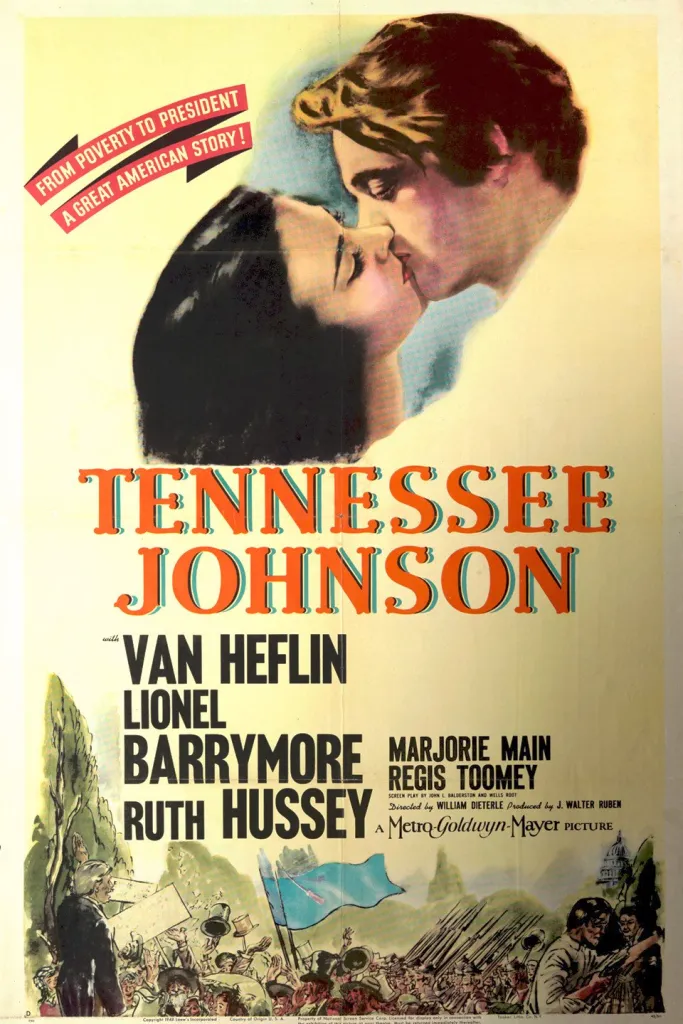Gunzburg is credited with only five screenplays, of which Tennessee Johnson was his third. He is better known for his pioneering work in 3-D cinematography in the 1950s. Little is known about Meyers, whose only film credit is this one, suggesting that “Meyers” may have been someone’s nom de plume.
Arguably, Balderson was the best of the four. He was a two-time Oscar nominee (The Lives of a Bengal Lancer in 1936 and Gaslight in 1945), and is remembered today for his contributions on the scripts on classic Universal horror films, including Dracula and the Bride of Frankenstein. He was also one of many who worked on the script of Gone With the Wind. Tennessee Johnson would be one of his last projects.
Root was a veteran screenwriter who started his career in 1928 and wrote scripts in both films and television until the 1960s. Except for the 1937 version of The Prisoner of Zenda, none of his screen credits are notable.
Despite the historical liberties, the trailer for the film, titled A Two Minute Quiz, tried to pass itself off as a history exam, asking the audience if they knew the name and the life of Andrew Johnson. The trailer went on to say, “MGM has fashioned a brave drama of a proud young America valiantly fighting for unity.” However, the film’s poster, which featured Heflin kissing Hussey, could suggest that the film was a love story.
The film was released on December 3, 1942. Even before its premiere, it faced controversy. The United States Office of War Information (OWI), upon looking at a rough cut of the film, expressed concerns about how it portrayed views on slavery, emancipation, and African-Americans, which in turn could affect the war-time morale of African-Americans. They also complained that the film showed Johnson, whom Frederick Douglass called “no friend of our race” too favorably and Stevens, one of the biggest abolitionists of his day, unfavorably. Consequently MGM spent $250,000 on reshoots to address these issues. The final cost for the 102-minute film was $1,042,000, about $18.7 million today.
Despite the re-shoots, the film was still protested by the NAACP. A number of actors, including Zero Mostel and Vincent Price, unsuccessfully petitioned the OWI to destroy the film in the name of national unity. Despite the controversy, the film got decent reviews. Van Heflin’s performance was praised by critics. Despite this, it made only $684,000 (about $12.3 million today) a loss of $637,000 ($11.4 million today).
